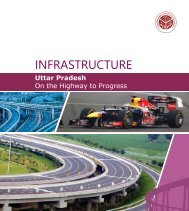media manual_low res final
media manual_low res final
media manual_low res final
You also want an ePaper? Increase the reach of your titles
YUMPU automatically turns print PDFs into web optimized ePapers that Google loves.
What is Greenpeace doing in Bihar?<br />
Bihar has been struggling with energy We have worked with key stakeholders in the state and the<br />
access for decades. About 89 per cent government machinery to develop a legal, political and regulatory<br />
of the state’s population <strong>res</strong>ides in rural framework to review the existing centralised energy infrastructure and<br />
areas and almost 95 per cent of the rural encourage utilisation of renewable energy in the state.<br />
population in Bihar is still dependent on<br />
kerosene as a primary source of lighting. In2011, Greenpeace launched its project “Ensuring Energy Access in<br />
Just about half the villages in the state Bihar through Decentralised Renewable Energy” to showcase a new<br />
have been electrified, where the quality of approach for energy justice. As part of it, we conducted a survey on<br />
electrification is also suspect. ii<br />
electrification done through Rajiv Gandhi Grameen Vidyutikaran Yojana<br />
and recommended the use of DRE for reaching rural areas. In 2012, as<br />
Greenpeace strongly believes that a<br />
part of this campaign, we successfully demonstrated irrigation pump<br />
decentralised and sustainable approach is sets that run on solar, post which the state government announced a<br />
the right way forward in providing electricity host of schemes on irrigation, education, health and other livelihood<br />
to the millions p<strong>res</strong>ently deprived of it. programs using alternative renewable energy.<br />
Bihar can leapfrog into the future to provide<br />
for the energy needs of its population in a Greenpeace has been witnessing various levels of changes it has<br />
sustainable manner. To do this, the state must brought in the state, particularly in its mission to convert a nonbeliever<br />
into believer. From changing and strengthening an ambitious<br />
chart an alternative development pathway<br />
using decentralised renewable energy or DRE. chief minister’s belief that decentralised renewable energy systems are<br />
Such an alternative energy paradigm would here to stay, Greenpeace is also advocating to the state government to<br />
enable Bihar to ensure quality electricity and increase investment in renewable energy technologies for irrigational<br />
inclusive development to its people.<br />
purposes.<br />
Greenpeace has been working in Bihar since<br />
2010 to bring about this paradigm shift in<br />
its energy planning and investment. It is<br />
implementing the energy access campaign<br />
and has established the political momentum<br />
in the state towards DRE as a tool to remove<br />
energy poverty. The campaign aims to<br />
challenge the dominant perception that<br />
centralised addition will deliver power to all.<br />
It instead works to create political and policy<br />
champions who will support decentralised<br />
systems powered by renewable sources<br />
of energy versus coal or nuclear to provide<br />
electricity access to millions who currently<br />
don’t have it (even if they are on the grid).<br />
Greenpeace has been working in Bihar since 2010 to ensure<br />
quality electricity and inclusive development to its people<br />
MEDIA MANUAL | Introduction: Decentralised Renewable Enregy<br />
3





